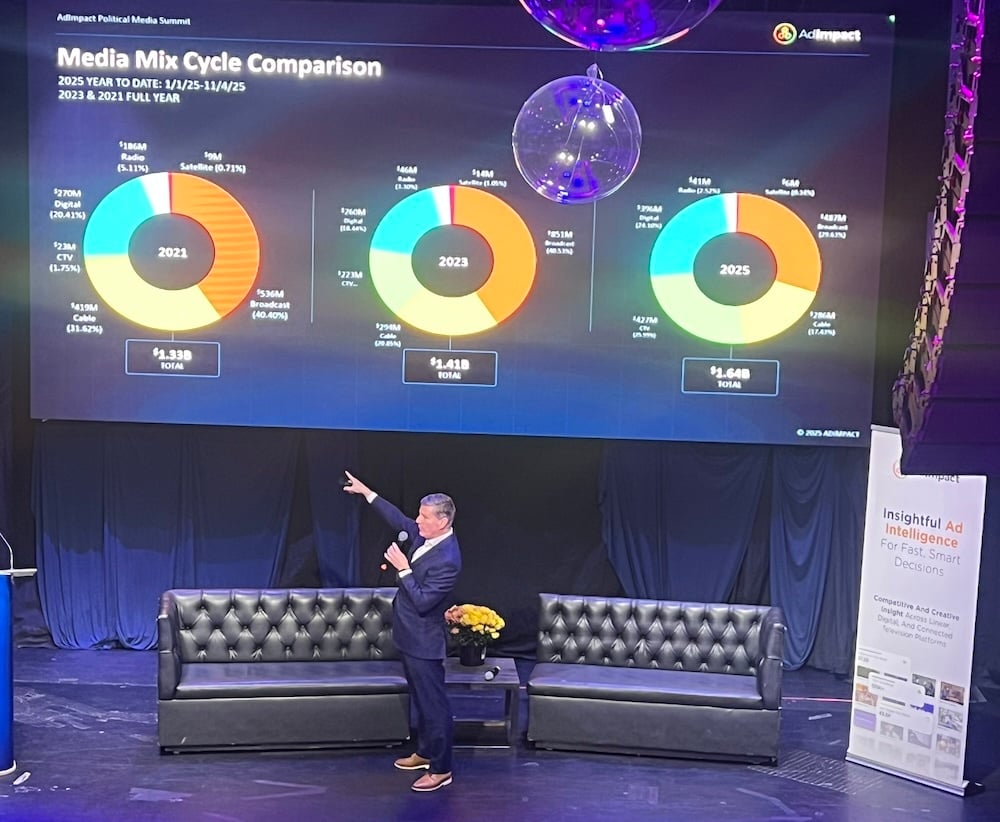Local advertisers finally have the advantage they need to be on the biggest screen in the home.
Why? Because of the shift we’re seeing to CTV, and the availability of traditional television content in streaming platforms. According to BIA Advisory, ad spending targeting CTV in local markets will reach nearly $3 billion in 2025, triple the spend seen in 2020. This revenue growth is being driven by a combination of factors, including TV groups, FAST channels, premium AVOD services and addressable advertising.
Addressable, where every home may get a different ad, is a game changer as it offers hyper-targeting, lessens wasted ad spend and digital connections offer more ROAS for budget-conscious, local advertisers. Additionally, unlike other video ads, such as those that run on YouTube or Instagram, addressable TV, especially on the household television, is a lean-back experience and can’t be skipped or swiped, giving local advertisers access to highly attentive users.
From Simpli.fi, to Madhive, MNTN, and JamLoop, DSPs are now focusing on local planning tools to respond to the increasing demand from local advertisers as premium CTV inventory supply accelerates.
Here’s how the CTV environment that exists today enables local advertisers to meet their goals.
Spot on Advertising
Addressable allows local advertisers to selectively target audiences they’re looking to reach, leading to more personalized campaigns. Local advertisers can segment out specific audiences based on demographic data, interests or viewing habits, ensuring that their ads are reaching the right audience. In fact, data from Go Addressable shows that addressable television is more precise than IP address matching. Their analysis found that 95% of addressable households were matched via postal address compared to 60% via IP address.
Addressable also lets advertisers reach specific members of a household, resulting in a highly personalized experience for the consumer. This can help improve customer loyalty and boost outcomes for the advertiser. For instance, a local grocery store can personalize an ad for a parent and their college-aged son in the same household, offering them different products using different datasets.
Maximizing ROI in Real-Time
Along with better targeting comes the ability to effectively measure the outcome of specific campaigns. Unlike traditional advertising methods, addressable television provides more accurate tracking of an ad’s performance and viewer engagement in real-time. Addressable television gives advertisers numerous possibilities to measure the performance of their campaign, like reach and frequency, conversion rate and ROAS. For example, an advertiser running a campaign with a QR code can leverage addressable to see the exact number of people who’ve scanned the code and whether they made a purchase after visiting the link.
The ability to see an ad’s real-time performance also allows for brands to adjust their campaign on the fly, whether it be different creative or a new audience segment. This ensures that brands are maximizing their ad spend and reduces waste on campaigns that are underperforming. So, the brand running the QR code campaign can look at the conversion rate of their current ad creative and change the call to action or the people in the ad to drive more conversions.
Big Impact on a Small Budget
Unlike big-name brands, local advertisers don’t have unlimited budgets to spend on advertising. Often, their entire budget has been spent on one or two ad campaigns that can be used over time. Addressable unlocks new opportunities for local advertisers as it gives them more bang for their buck. Advertisers only pay for the ads that reach their target audiences, providing them with a more cost-effective approach than a wider ad buy. Given the ability of addressable television to leverage datasets to identify and reach the right audiences, advertisers can effectively and efficiently use their budgets to generate long-term results.  There’s no better showcase for the value of addressable television than its utilization by AB InBev and Sam Adams for Super Bowl ads to local markets. During this year’s Super Bowl, AB InBev bought local ads in markets in Arizona, Oklahoma, Texas and Louisiana, hoping to reach specific audiences rather than the millions who watch the game across the country.
There’s no better showcase for the value of addressable television than its utilization by AB InBev and Sam Adams for Super Bowl ads to local markets. During this year’s Super Bowl, AB InBev bought local ads in markets in Arizona, Oklahoma, Texas and Louisiana, hoping to reach specific audiences rather than the millions who watch the game across the country.
Having major brands leverage local buys is a good indicator of how crucial it is to have an understanding of local markets, and underscores the ability to target audiences in a more cost effective way than the national buy.
Overall, addressable television helps brands of all sizes maximize the impact of their ads. Automated Content Recognition (ACR) data provides valuable insights into reach and frequency of ad exposure by market and household, helping brands to adjust their targets and creative accordingly. Addressable TV levels the playing field for local advertisers looking to be on the big screen in the household, and it should be an essential part of their television strategy moving forward.










